Nothing succeeds like success, and English entrepreneur Paul Sleeman's accomplishment of selling all 24 examples of the unique Hesketh 24 V-twin streetfighter has resulted in a follow-up model, the retro-themed Sonnet. In creating the Sonnet, Sleeman has confirmed the restoration of a brand whose résumé is worthy of its own Hollywood screenplay. Indeed, the Hesketh story—first on four wheels, then two—is so unlikely that its treatment in the Hollywood hit movie Rush might have seemed hopelessly improbable if the following summary was ever submitted as a script. But, in fact, it's true.
Thomas Alexander Fermor-Hesketh, the 3rd Baron Hesketh, KBE, PC, was born in 1950 and inherited the title of Lord Hesketh at the age of four when his father died young. The family's wealth came from the first Baron's marriage to a rich American woman whose family owned huge chunks of California real estate, as well as a large slice of Wells Fargo and the oil company that later became Chevron Texaco. This was held in trust for Alexander, who didn't inherit it until turning 21.
After tiring of life as a boarder at his British public school, Hesketh ran away at 16 to become an upmarket used-car salesman. Stints as a stockbroker in San Francisco and a ship broker in Hong Kong followed, before he returned to the UK and took up the life of a British nobleman, whose family estate at Easton Neston, near Towcester, covering thousands of acres of the Northamptonshire countryside, was conveniently adjacent to the Silverstone motor racing circuit.
In his days in the used-car trade, Lord Hesketh had made friends with a charming but unsuccessful racing driver named Anthony “Bubbles” Horsley, who introduced Alexander to motor racing, and, in 1972, to James Hunt, an impecunious racer from a similar public-school background. Universally known as “Hunt the Shunt” thanks to his numerous on-track indiscretions, Hunt was equally good box office off-track, where thanks to his film-star looks and insouciant charm, he left a succession of dolly birds trailing in his wake.
Aged 22, “The Good Lord” (as Hunt called Hesketh) decided to form his own racing team, with “Superstar”—his name for Hunt—as driver and Bubbles as team manager, with such necessary accouterments as a Bell Jet Ranger helicopter to get to and from the circuits and a Rolls-Royce for paddock transportation, as well as crates of champagne to provide refreshment and a bevy of beautiful women to pour it. After acquiring a well-used Surtees open wheeler that brought little success in Formula 2, the team decided to enjoy themselves properly by stepping up to Formula 1 in 1973 with a brand-new March 731. The car was prepared in the spacious stable block of Easton Neston; the Hesketh family owned the Towcester horseracing course next door.
Eschewing such tiresome necessities as any form of sponsorship that might have prevented them from having such a good time, the team was entirely bankrolled by the Hesketh checkbook—hence, Alexander’s proud “Le Patron” badge on his overalls—and raced a car painted in patriotic red, white, and blue livery under the slogan, “Racing for Britain and for You.” Hunt paraded an alternative motto on his race suit: “Sex—Breakfast of Champions.”
Inevitably, the rest of the Formula 1 paddock, encompassing such hard-nosed individuals as Bernie Ecclestone and Colin Chapman, who had fought their way up from humble beginnings to head Formula 1’s lineup of movers and shakers, regarded Team Hesketh as a bunch of toffee-nosed buffoons with more money than sense. But when Hunt finished third in the Dutch GP at Zandvoort in only his and Hesketh’s fourth F1 race, the sneers were wiped off the critics’ faces. Eighth place overall at the end of their rookie season after finishing a close second in the final race of the season, the US GP at Watkins Glen, James Hunt and Hesketh Racing had arrived on the scene in a big way.
For 1974, Hesketh decided to go all out for Victory Lane by hiring the car’s designer, Moto Guzzi-riding engineer Harvey Postlethwaite, to create the team’s own Hesketh 308. Once again completely devoid of sponsorship markings, the 308 showed promise by winning the non-championship International Trophy F1 race at Silverstone en route to another eighth in the F1 points table for Hunt. The following year, Hunt took the Hesketh 308 to victory in the Dutch GP at Zandvoort against Ferrari, Lotus, McLaren, BRM, and the rest of the Formula 1 aristocracy, finishing fourth in the championship.
By now the small privateer team had become folk heroes in Britain—and elsewhere too. Still gloriously unsponsored, they represented the triumph of the little guy working out of a stable workshop over their colossal and much better-equipped rivals while having a bloody good time in the process. It was sport, not business. Hesketh in Formula 1 was the last hurrah for the Corinthian principle in F1 racing, even if bankrolled by a wealthy aristocrat.
Unfortunately, Hesketh’s deep pockets began to run dry, and at the end of that season he sold the team and the 308 design to Canadian oil magnate Walter Wolf. Hunt moved to the rival McLaren team for 1976 and won the world championship. But Postlethwaite was far from the only motorcyclist in Hesketh Racing. With Formula 1 now off the agenda, he and Horsley persuaded Hesketh to bankroll the revival of the British motorcycle industry (Norton had gone bust, Triumph was in the hands of the soon-to-fail workers’ cooperative, and all other marques were already dead) by using the skills and facilities they had acquired in F1 to develop a high-performance, high-quality motorcycle for sale to the public.
Prototypes took to the roads in 1978. Weighing 550 pounds with a 59-inch wheelbase, the Hesketh V1000 was conceived as a two-wheeled Aston Martin—a classy, expensive gentleman’s express. Powered by an air-cooled 90-degree V-twin with sandcast crankcases and a one-piece roller-bearing crankshaft carrying forged pistons mounted on forged and polished EN24 con-rods, each matched to within 2 grams of the other.
British engine specialist Weslake, whom Hesketh had encountered in Formula 1 after it designed the V-12 motor in American rival Dan Gurney’s race-winning Eagle and had created many successful air-cooled single- and twin-cylinder motorcycle engines, was commissioned to build the motor. Designed by Ron Valentine, the engine employed four-valve heads incorporating twin, overhead, chain-driven, needle-roller camshafts, a first for a British streetbike. Measuring 95 by 70mm for a capacity of 992cc, the five-speed engine was fed by twin 46mm Dell’Orto carburetors and produced 79 hp at 6,500 rpm, later rising to 86 hp after some development, and was mounted as a stressed member in a nickel-plated steel-tube frame designed by Postlethwaite, with the forward cylinder all but horizontal, Ducati-style.
Brembo 280mm cast-iron disc brakes, 38mm Marzocchi fork, and twin shocks were also shared with Ducati, while the composite alloy Astralite wheels (a 19-inch front and 17-inch rear) and patrician styling by John Mockett (later the creator of all Triumph models to appear during the first decade of the company’s revival under John Bloor beginning in 1991) were thoroughly British.
After two years of development, the Hesketh V1000 was unveiled to the press in 1980, and production began the following year in nearby Daventry with a 47-strong workforce recruited with the intention of building 2,000 motorcycles per year. But there were numerous problems. Apart from a heavy, slow-shifting gearbox, there were constant oil leaks, as well as seizures due to a lack of airflow to the rear cylinder, issues that Weslake should certainly have addressed.
Hesketh’s non-motorcycle management realized too late they had misplaced their trust, and the resultant bad press (the British motorcycle press of the day was all too eager to perpetuate the class war by sticking the knife into such an aristocratic enterprise) combined with an underdeveloped bike, spiraling costs, and a collapsing global motorcycle market, meant that after producing just 139 examples of the V1000, Hesketh Motorcycles Ltd. went into receivership in 1983.
Lord Hesketh formed a new company, Hesleydon Ltd., based in the old laundry outbuildings at Easton Neston, to manufacture a revamped, fully faired touring version of the V1000 named the Vampire. Although the company now had a motorcycle with export potential and the reliability problems were mostly cured, the bike still retained too many of the V1000’s faults, and just 40 examples of the Vampire were built before the Hesketh brand was finally consigned to the dustbin of history.
Well, nearly. Mick Broom had been part of the original Hesketh R&D team. In 1984, Lord Hesketh sold Hesleydon to Broom Development Engineering, which, over the next quarter-century, produced a further total of around 60 improved examples of the V1000 in the same Easton Neston outbuildings where development of the model had begun. As well as resolving the Weslake engine’s mechanical deficiencies, Broom updated the running gear with adjustable Kayaba suspension, Nissin brakes, and lighter wire-spoke wheels, the front now an 18-incher.
Broom also produced the Vortan, a one-off showbike intended to form the basis of a more modern Hesketh model, though just the one example was built before Lord Hesketh—who had entered politics with the personal encouragement of Margaret Thatcher, holding government office from 1986 until 1993 and later becoming Treasurer of the Conservative Party—put the entire Easton Neston estate up for sale in 2006 at an asking price of 50 million pounds. Its sale to Russian-born clothing entrepreneur Leon Max forced Broom to relocate to nearby Turweston Aerodrome, not far from Silverstone.
Once in his new factory, Broom resumed producing uprated versions of the original V1000 until UK entrepreneur Paul Sleeman acquired Hesketh Motorcycles in May 2010, in a deal signed with Lord Hesketh himself. Sleeman subsequently relaunched the brand with the all-new, limited-edition Hesketh 24 powered by an American-built S&S engine. Production of this began in mid-2014, and all 24 examples were duly sold out at a price of approximately $44,000. Sleeman will be hoping that his follow-up model, the less-costly Sonnet, will enjoy even greater success.











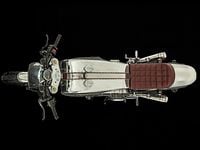

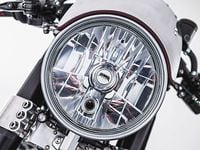
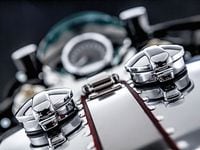

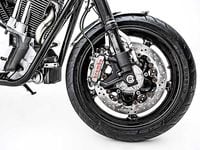
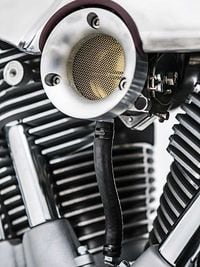


/cloudfront-us-east-1.images.arcpublishing.com/octane/S35YGSEMEZB4BLTDJTSZPF4GLA.jpg)
/cloudfront-us-east-1.images.arcpublishing.com/octane/5UOT6HPX2JFMRJAX6EH45AR4MQ.jpg)
/cloudfront-us-east-1.images.arcpublishing.com/octane/OKWOJWAKP5EP3OACCRRWPCIX2Q.jpg)
/cloudfront-us-east-1.images.arcpublishing.com/octane/2WF3SCE3NFBQXLDNJM7KMXA45E.jpg)
/cloudfront-us-east-1.images.arcpublishing.com/octane/G4MG6OUCJNBSHIS2MVVOTPX65E.jpg)
/cloudfront-us-east-1.images.arcpublishing.com/octane/IIGGWFOTOJGB7DB6DGBXCCMTDY.jpg)
/cloudfront-us-east-1.images.arcpublishing.com/octane/QSTCM6AVEZA5JJBUXNIQ3DSOF4.jpg)
/cloudfront-us-east-1.images.arcpublishing.com/octane/U4I7G625B5DMLF2DVIJDFZVV6M.jpg)
/cloudfront-us-east-1.images.arcpublishing.com/octane/B6XD6LS6IVCQPIU6HXDJSM3FHY.jpg)
/cloudfront-us-east-1.images.arcpublishing.com/octane/ICL63FEDDRDTTMINYICCEYGMDA.jpg)
/cloudfront-us-east-1.images.arcpublishing.com/octane/FCGZHQXRBZFLBAPC5SDIQLVF4I.jpg)
/cloudfront-us-east-1.images.arcpublishing.com/octane/WNOB6LDOIFFHJKPSVIWDYUGOPM.jpg)

/cloudfront-us-east-1.images.arcpublishing.com/octane/X33NU3E525ECRHXLNUJN2FTRKI.jpg)
/cloudfront-us-east-1.images.arcpublishing.com/octane/6KKT5NNL2JAVBOXMZYS5ZO76YA.jpg)
/cloudfront-us-east-1.images.arcpublishing.com/octane/J5RKG5O455GMPGQRF2OG6LRT7A.jpg)
/cloudfront-us-east-1.images.arcpublishing.com/octane/GX2CIZKQVRH2TATDM26KFG2DAE.jpg)
/cloudfront-us-east-1.images.arcpublishing.com/octane/ZWIDYSAKQZHD5BHREMQILXJCGM.jpg)
/cloudfront-us-east-1.images.arcpublishing.com/octane/CYUHJZCTSJCH3MRAQEIKXK7SCQ.jpg)
/cloudfront-us-east-1.images.arcpublishing.com/octane/LKOFINY56FCXJCANJ5M7ZDQUBY.jpg)
/cloudfront-us-east-1.images.arcpublishing.com/octane/4NBPDACMWJH63JQYJVK3QRBDZI.jpg)
/cloudfront-us-east-1.images.arcpublishing.com/octane/KKHQHRR3FJGX7H2IPU6RALMWG4.jpg)

/cloudfront-us-east-1.images.arcpublishing.com/octane/5IOFS5JAE5FOXMNA23ZRAVVYUU.jpg)